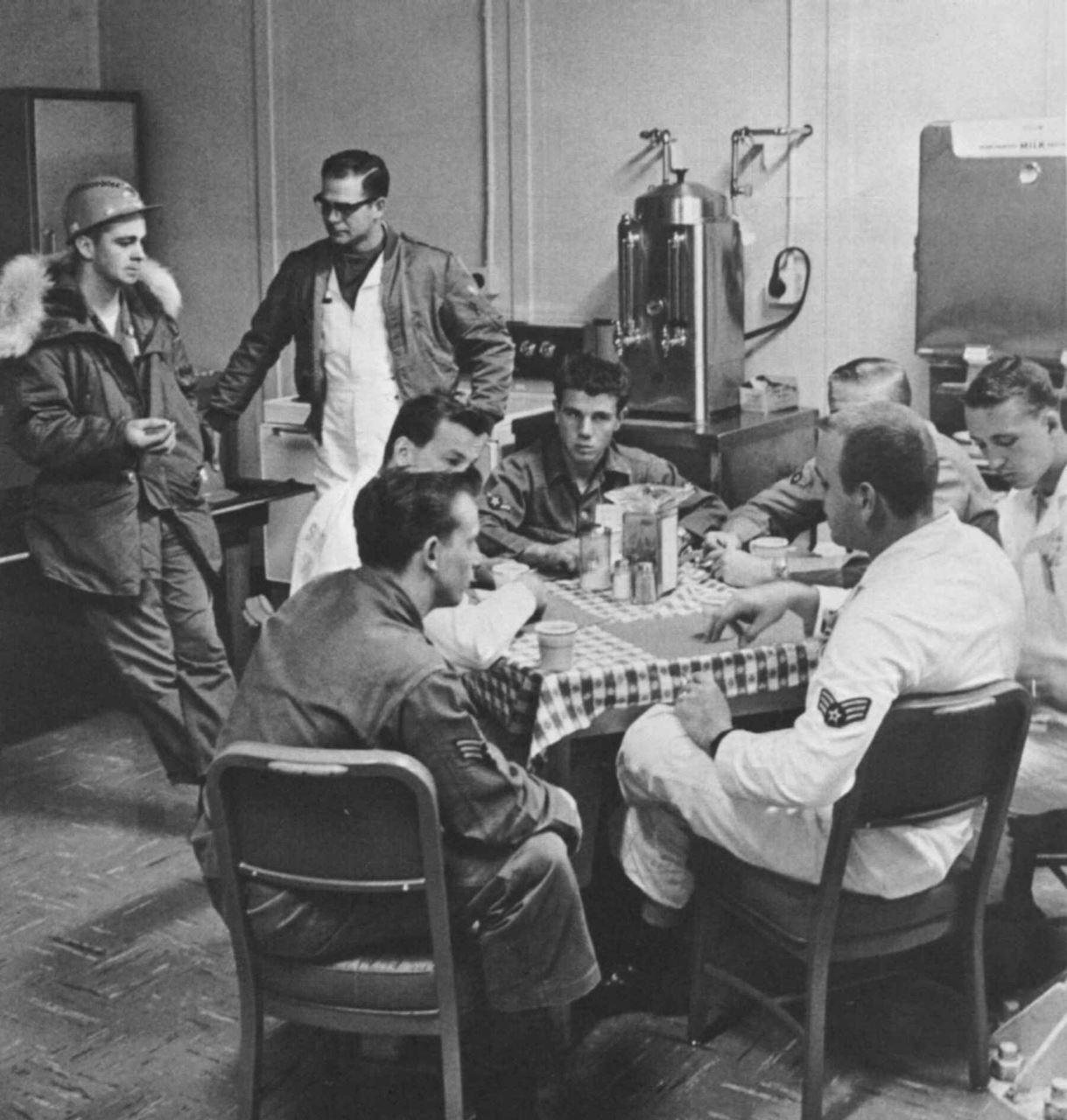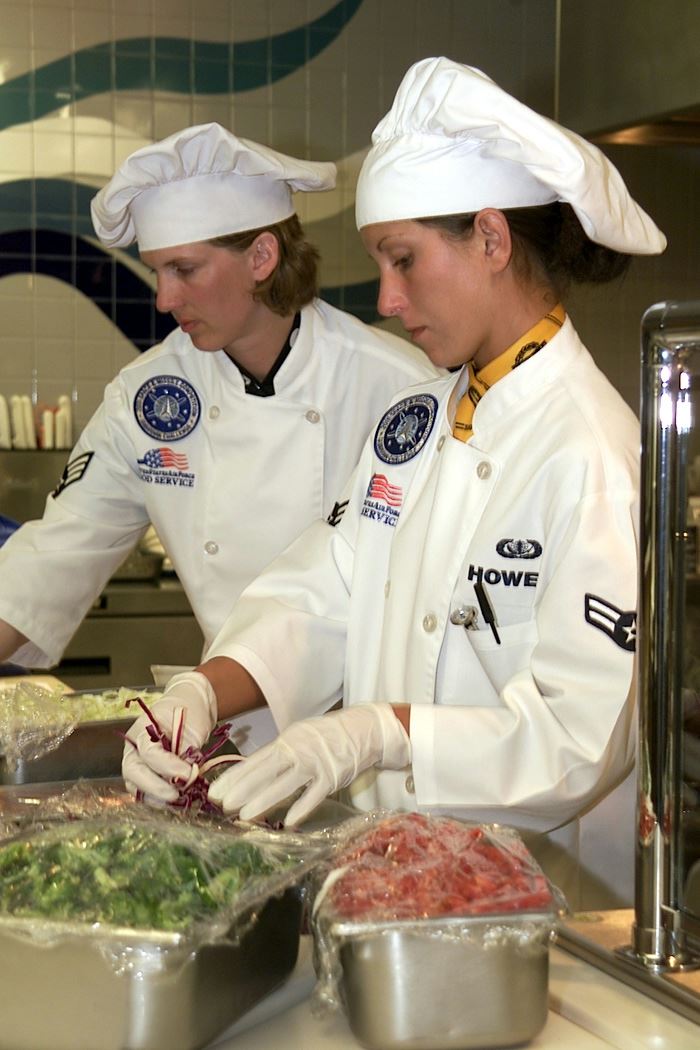Food and Missileers One of the popular features of the AAFM Quarterly Newsletter has been the continuing series of articles about almost every aspect of missile history – not just the technical history, but the history of things like the Cuban Missile Crisis, the missile competition, uniforms, transportation and one that applied no matter what system a Missileers served in, food. We all have to eat, and missile duty complicated that task and offered some interesting options over the years. The fact that Missileers will eat almost anything isn’t important to the story - you will see that, based on the tales in this collection, we just prove they will. We had a good series on food and Missileers in the Newsletter back in 2003, with a number of articles from members in several system. We got in a little hot water on one, an article called “Tactical Pizza,” which was a story about how Matador troops made pizza using two sliced of white bread, ketchup, sliced American cheese and a toaster. The photo that the author provided to us showed some young enlisted Matador troops enjoying their pizza in their ready room, a typical setting in the late 1950s and early 1960s. In the all-male Air Force, it wasn’t unusual to find a Playboy poster adorning a wall in a ready room or dormitory – and there was one visible behind the young Airmen. While this was part of our history 45 years ago, some readers objected to the photograph. We apologized to those who were offended, and we have become more sensitive to those issues since that event. Photos - Right, Tactical Pizza, minus the Playboy foldouts. Below, Titan I Dining Room Bottom Right, Minuteman Chefs |
|
| Most of us agree that the food provided to missile crews, maintainers, security forces, civil engineers, comm folks and everybody else who visited or “lived” on a missile site has run the gamut, from real gourmet meals to stuff we weren’t too sure of. Some folks had it really good - there was a site cook or two, a dining room and real, home cooked food. Others had to stop by and pick up the “rations” on the way to the site and prepare it themselves. Still others brownbagged - and most of us knew all the good local cafes and burger places in the boonies, like the Cove Cafe in Newell or the great cinnamon rolls in Michigan. You all had your favorites. Those of you who served in Atlas and Titan II had a different problem- there was only you, the crew on site - maintenance folks brought their own food. Matador, Mace, BOMARC, Thor, Jupiter and airlaunched had other options and not all meals were like Bob Bolton described in his “Tactical Pizza” article. In Titan I we had it good - a real chow hall on the site, with a staff or tech sergeant cook and a young airman assistant on duty to fix our meals. A Titan I site was a busy place - up to 100 folks there during “normal” duty hours - so the two cooks had a big job preparing full meals for the mob at lunch, and other times during heavy maintenance. Breakfast, dinner and midnight chow were less busy - usually only the combat crew, powerhouse folks, security troops and cooks. The food was always good and there was lots of it. Atlas foil packs, described by an Atlas E veteran, consisted of an entree, bread, one or two veggies (can’t recall exactly), and a dessert. Each item was packed into its own individual aluminum foil container with a lid crimped on. The entree was usually something like smothered steak, meat loaf, or roast beef with gravy. Anything that would lend itself to being cooled in a walk-in cooler overnight or since the very early morning, then reheated at the site during the day. The same for the veggies. Green beans, corn, succotash, peas, etc. The desserts were usually a helping of pie. Cherry and apple seem to have been the favorites. The bread was similar to toady’s brown and serve rolls, with two rolls in the container. One complete foil pack meal was packaged in a lightweight cardboard box, usually along with half-pints of milk, seasonal fruit, condiments, and plastic eating utensils. Each had two cigarettes in a little cardboard container about the size of a package of gum. The procedure for obtaining these rations varied depending on the job to be done on the sites, the squadron section involved, etc. Those on the Mobile Checkout and Maintenance (MOCAM) crews, for example, would order our foil packs as soon as we arrived at the Missile Assembly Building (MAB). Sometimes people ordered individually, at other times one crewmember would order for the whole crew. Someone would call the foil pack kitchen and find out if choices of entree or dessert were available. An order was compiled, the kitchen notified. The foil pack kitchen was the last stop on the way out of town. |
We started Minuteman the same way - each site in the early and mid-1960s had two cooks on site and the same home cooked meals. We had a real kitchen (small but effective) and a dining room. The cooks delivered the meals to the duty crew below ground, but the cops, maintenance folks, Facility Manager, cooks and any other folks on site got to sit down in the dining room. On holidays, families were invited to the sites, as they had been in Titan I. But in the late 1960s, things changed. All the experienced food service folks were needed in Viet Nam - so we ended up with really junior cooks at the missile sites. Someone at the headquarters came up with a new foil pack – a little different than the combined, TV dinner style described by Jack Roberts from the Atlas days - to make it easier for the inexperienced cooks. Foil packs were individual servings - select your meat dish and the vegetables to accompany it (and memorize the good ones and the bad ones, by number) and desserts. A salad was usually available (even a brand new cook could handle that), and for breakfast you could also opt for real eggs, bacon and toast instead of some of the packaged choices.Today in Minuteman we have “Chefs” at each site, and they take pride in their work. They even competed in the annual Space and Missile Competition at Vandenberg. It is similar to the later days of the “new” foil pack - with choices for each meal - but a little more personal than it was in the early foil years. Then there was GLCM - the members of a Ground Launched Cruise Missile flight really roughed it when they deployed to the “field.” They had a device to “cook” the MREs - or at least increase the temperature a little before ripping open the olive drab plastic packs of food. Some folks really like “Meals, Ready to Eat”, but others (including the author) never found them to be real favorites. |
|



